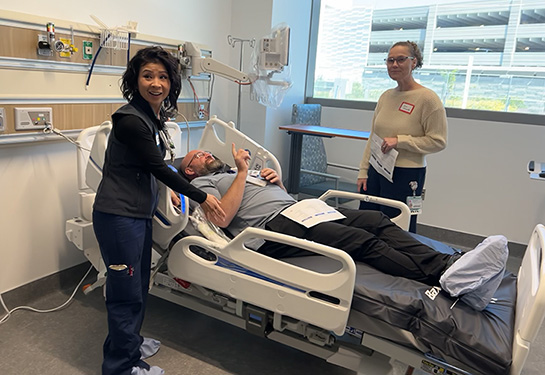CHPR receives NIH award to develop a predictive model for safely prescribing opioids
Patients prescribed opioids who later transition to long-term use may experience a number of risks, including opioid use disorder, overdose, or even death. According to the Centers for Disease Control and Prevention, reducing these risks is a critical step toward solving the opioid crisis in the United States.

Researchers at the Center for Healthcare Policy and Research (CHPR) have received $170,000 from the National Institute on Drug Abuse at the National Institutes of Health (NIH) to develop a model to help predict the risk of long-term opioid use.
The research team will be led by CHPR researcher Iraklis Erik Tseregounis. The goal is to develop a clinically useful prediction model for administrators of prescription drug monitoring programs (PDMP). PDMPs are state initiatives that aim to protect at-risk patients by improving opioid prescribing and informing clinical practice.
“This research is an important part of giving physicians the necessary tools to safely prescribe opioids, avoid transitions to long-term use among their patients, and bring down rates of opioid use disorder and overdose,” said Tseregounis, a substance use epidemiologist and assistant project scientist in the UC Davis Department of Internal Medicine.
Tseregounis has developed a risk prediction model using California-based PDMP data that predicts the likelihood of a patient prescribed opioids transitioning to long-term use. The new project will assess how this model fits Kentucky — a state with vastly different demographics and rates of opioid prescribing.
The team will also develop new models focused on individual states using the Kentucky PDMP data. Then, they will compare the California model’s performance to the new models. The comparison will help inform PDMP users about trade-offs of performance and feasibility when using a “foundational model” versus investing resources to develop state-specific models from scratch.
Establishing clinical tools for PDMPs has been difficult because state demographics are so different and state PDMPs operate independently. The project aims to overcome this barrier by developing a generalizable risk prediction model. The model can be used to catalyze the development of clinical tools across the country.
“It is not practical to develop separate risk prediction models for 50 states. We believe that a foundational model with high performance and minimal needed updates when applied in new states will greatly improve the quality and feasibility of prediction tool development. Ultimately, this will help promote safe opioid prescribing practices,” said Tseregounis.
The team includes Chris Delcher from the University of Kentucky and CHPR affiliates Stephen Henry and Daniel Tancredi.





